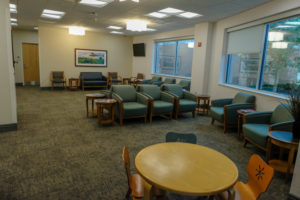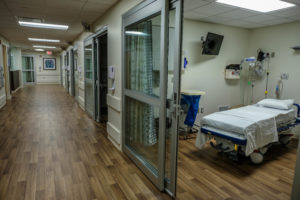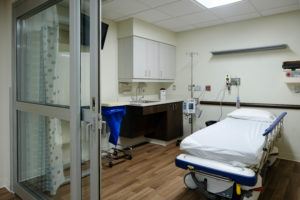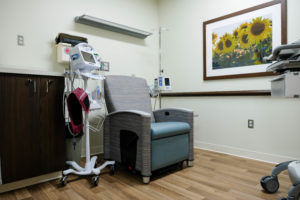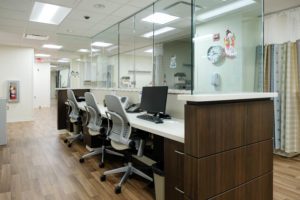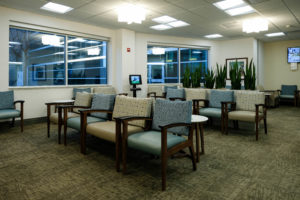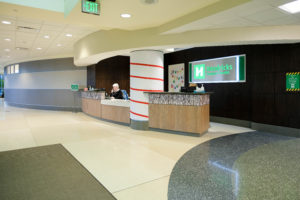Shiel Sexton prides itself on building structures that positively impact the community, which includes a vast portfolio of healthcare projects. Some of the most critical aspects on a construction jobsite are cleanliness, employee safety, and building occupant safety. These aspects are significantly heightened when completing a renovation in an active hospital. Most recently, Shiel Sexton turned over a multi-phased renovation for Hendrick’s Regional Health Hospital in Danville, IN. HRH enlisted Shiel Sexton to revitalize an older section of the hospital to create new endoscopy, bronchoscopy, IV therapy, and wound therapy spaces.
Working in an active hospital carries extreme risk and requires everyone involved in the project to follow infection control risk assessment and mitigation guidelines. The hospital staff, design team, and construction management team coordinate and implement the infection control processes to ensure that protocols are in place before work begins and then utilized during construction and commissioning.
Prior to and during the renovation, Shiel Sexton worked with the hospital staff, the HRH Infection Control Risk Assessment (ICRA) manager, and the design team to create ICRA documents. This documented process proactively identifies and plans each phase of construction, determines the potential risks, and the processes needed to mitigate those risks.
The HRH ICRA manager helps determine the level of risk for construction. A typical ICRA plan has four levels of risk– Low, Medium, Medium-High, High – that measures how strictly controlled the construction environment needs to be. For the HRH project, each phase was considered high risk for infection control given the high-traffic hospital setting. With that received rating, the ICRA manager required implementation of the following procedures:
- Install, monitor, and maintain construction temporary walls from floor to the deck above creating a barrier to separate the construction space from the active hospital.
- Create, monitor, and maintain negative air pressure, utilizing HEPA equipped air filtration, exhausting the construction space and potential dust and particulates out of the building.
- Provide designated paths of travel and vestibule entrances to the construction area for employees, material, and rubbish. Monitor and clean the construction site, entrances, and travel paths with HEPA vacuums, mops, etc.
- Seal holes in the construction barrier from pipes, conduits, and punctures appropriately.
- Work off hours to minimize disruptions from noise or vibrations, affecting patients and staff.
- Coordinate the removal of the temporary barriers with the hospital and commissioning process. Remove barriers in a manner to minimize spreading dirt and debris associated with construction.
- Implement training for all subcontractor employees pertaining to the specific site safety and ICRA requirements.
- Coordinate fully and isolate the MEP systems from the rest of the hospital accordingly.
Ray Lake, Shiel Sexton Corporate Safety Director, explains why these guidelines are critical procedures when on a healthcare renovation –
“Infection control during construction in an existing and functioning hospital environment is crucial to the success of any project. Construction occurring inside of an operating hospital facility is quite different than a typical construction project. Preplanning work hours and tasks must take place to ensure that noise/vibration and dust are minimized throughout the construction phase. Constant noise and vibration can cause noise induced stress to the patients and the hospital staff.
Temporary barriers, sealed walls and negative air in the construction workspace are paramount to keeping nuisance dust from reaching the occupied spaces. These spaces are often occupied by sick or elderly patients that may have an already low immune system to combat simple airborne contaminants, which can contain microorganisms. The Shiel Sexton construction team had to be cognizant of all patients throughout the facility and maintain a very clean environment.”
Healthcare renovation projects require extra precautions to ensure the safety of onsite staff and patients within. With the proper ICRA processes and safety training in place, the project team has a strong chance to succeed and protect the safety of patients, hospital staff, and themselves.

